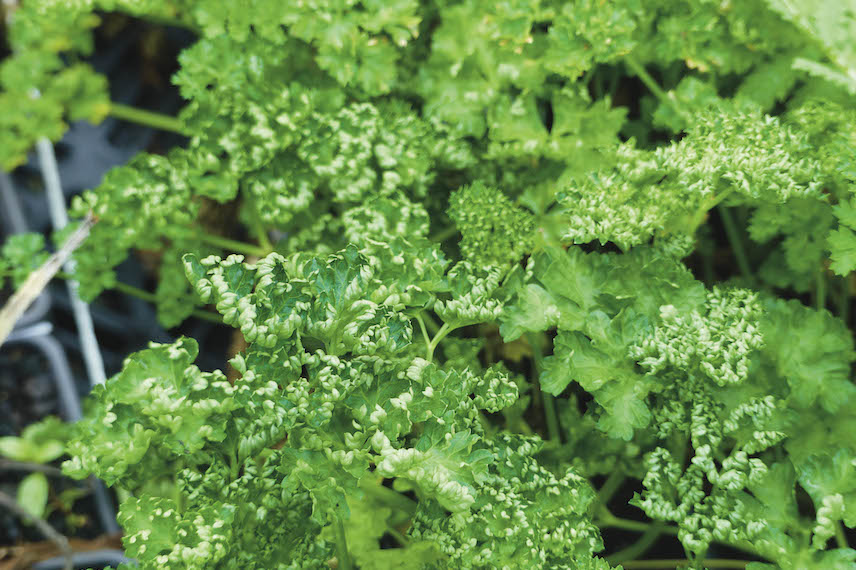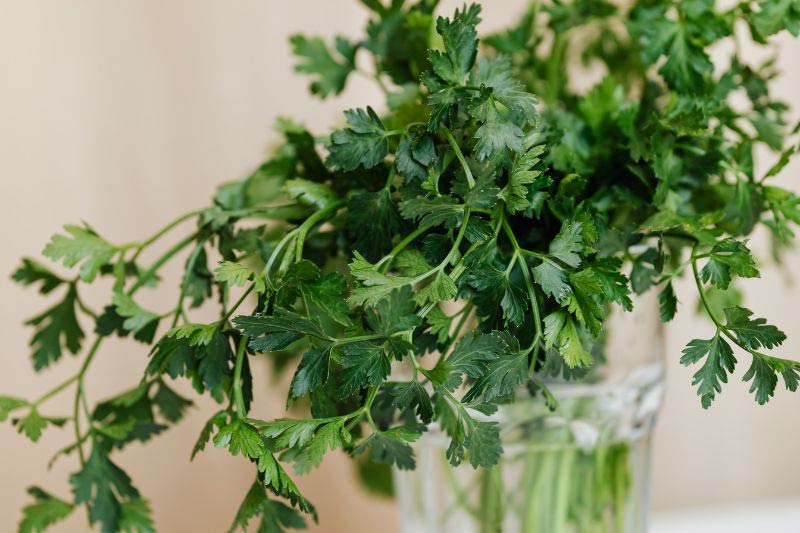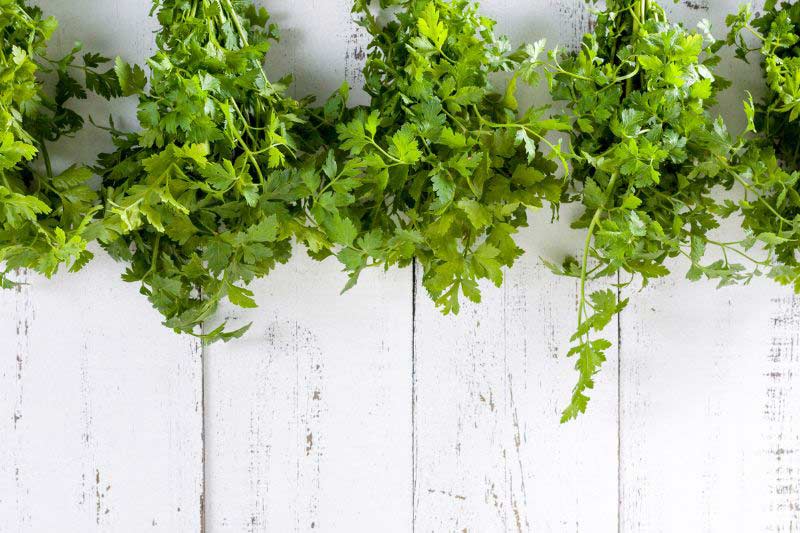In cooking, parsley always proves useful: used to add an extra savoury note to dishes, but also to decorate plates and play with colours. If you particularly enjoy the flavour of this aromatic herb, you should grow it yourself in the garden: it is a very undemanding species, that can even be grown in a pot on a balcony. Planted between May and October, it comes in several varieties you can choose according to your preferences. And if you want to enjoy it year-round, discover all possible methods to preserve it optimally.
Harvesting parsley in a few steps
Planting or sowing parsley
To start, sow parsley between February and September, in fairly shallow furrows, leaving about 20 cm of space between each hole. Soak seeds for 24 hours to greatly increase germination potential. Then, remember to water generously after sowing!
You can also plant parsley, using plug plants, in buckets or larger pots. Find all our tips to sow, plant and grow parsley, to give yourself the best chance of success.

You have a choice of several varieties: the most common is common parsley, with flat, delicately scented leaves. But there is also curly parsley, perfect for those who want an edible and decorative plant. Finally, Italian giant parsley is often considered the most flavourful.
When and how to harvest parsley?
From April until first winter frosts, you can harvest parsley. Harvest as needed, according to kitchen stocks and requirements for future preparations.
If you cover plants with a cloche, you can even extend harvesting into winter for parsley planted in open ground. Naturally, planting parsley in a pot also allows a longer harvest if you can bring containers indoors.
Everything you need to know about preserving parsley
Storing parsley in water
If you regularly pick parsley and prefer to cook with it fresh, place each bunch in a container with a little water immediately after harvesting. Always remove any damaged leaves and stems to prevent them from harming healthy leaves. Change this water every two days to extend fresh-keeping. Parsley needs a fairly cool atmosphere and some light. Do not place it in a dark room or on a windowsill often exposed to strong sun.

Drying parsley to preserve it
You can keep parsley fresh for quite a while, but best is to dry it for use at any time. To do this, hang it and let it dry in air.
Wash and dry the small bunch of parsley well, then hang it by the stem with string in a ventilated, dry place. Depending on conditions (weather and amount of herbs to dry), wait between three days and a week. When it crumbles easily to the touch, gather it, crumble it and store in an airtight glass jar.
When using it in cooking, bear in mind that dried parsley loses part of its aroma; you will therefore need to add a larger amount to flavour dishes.

Storing parsley in the fridge
As with any parsley storage, take time to sort through stems to remove those no longer edible. Then, place bunches in a glass of water and leave in the fridge; this will keep them quite simply for about 10 days.
To save time when cooking, you can also prepare parsley before placing it in the fridge. Rinse in cold water and drain thoroughly. Then, chop finely: you may keep or remove stems, according to preference. Chopped parsley can be placed in the fridge. You will have ready-to-use parsley that will naturally have retained its lovely colour.
Freezing fresh parsley
After following all tips to succeed in growing parsley, harvest in the morning once dew has dried, when aromatic herbs reveal most flavour. Then, rinse parsley and remove any wilted branches and leaves.
Blanch parsley in boiling water to preserve colour and flavour. Remove each sprig as soon as its colour lightens. Then, cool in air or under cold water to stop cooking. Although blanching is not obligatory, bear in mind it helps keep parsley green over months. Chop parsley finely and place in an ice cube tray with a little water (not to brim) or in airtight plastic bags.

Everyday ideas for using parsley
Native to southern Europe, parsley is now one of the most widespread aromatic herbs. In Greece, it was offered to top athletes as a reward. How to use it today? Parsley is no longer used as in former times, but remains indispensable!
A nutritionally interesting food
Although consumed in small amounts, parsley is extremely rich in minerals beneficial to the body, such as potassium, calcium, magnesium and iron. 100 grams of this aromatic herb contain under 50 calories, almost no fats and just over 1 gram of carbohydrates… but nearly 4.5 grams of protein!

A recognised natural remedy
In infusion or as a decoction, parsley has long been regarded as a powerful tonic without risk of overstimulation (as can happen with coffee). It is also, somewhat paradoxically, a plant with very mild sedative properties, helping one feel both more alert and more relaxed.
Many culinary uses
Finely chopped, common parsley is perfect to liven up mayonnaises, potatoes and all dressings used to bind composed salads. Some also use it to add flavour to yoghurts and fromage blanc. Finally, this aromatic herb is ideal for dishes based on white meat or fish.































![[plant id="persil"]Keep parsley. [plant id="persil"]](https://en.promessedefleurs.eu/blogwp/wp-content/uploads/2022/10/conserver-le-persil.jpg)
Comments